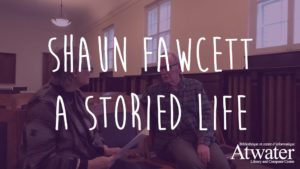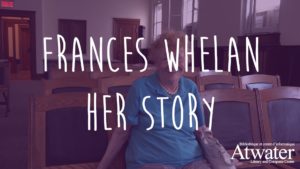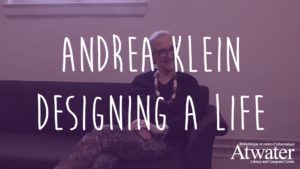Careers
George Kinloch – Banking on Life
 George Kinloch – Born in Glasgow, Scotland, Kinloch came to Canada in 1952, working for the Dominian Bank. After retirement at 62 he remained active with his Scottish roots, in organizations such as the Sons of Scotland and The Black Watch. He also became involved in the arts, managing the Mountain Playhouse at alongside Joy Thompson, who influenced the careers of renowned actors Christopher Plummer and William Shatner. (more…)
George Kinloch – Born in Glasgow, Scotland, Kinloch came to Canada in 1952, working for the Dominian Bank. After retirement at 62 he remained active with his Scottish roots, in organizations such as the Sons of Scotland and The Black Watch. He also became involved in the arts, managing the Mountain Playhouse at alongside Joy Thompson, who influenced the careers of renowned actors Christopher Plummer and William Shatner. (more…)
Ivan Livingstone – Role Model
 Ivan Livingstone- A true renaissance man, Livingstone acheived scholarships to eventually graduate from McGill University and play football for both the Calgary Stampeders and Montreal Alouettes. He went on to teach Chemistry, History, and become a school board commissioner, all from the humble beginnings of a low-income Verdun neighbourhood. (more…)
Ivan Livingstone- A true renaissance man, Livingstone acheived scholarships to eventually graduate from McGill University and play football for both the Calgary Stampeders and Montreal Alouettes. He went on to teach Chemistry, History, and become a school board commissioner, all from the humble beginnings of a low-income Verdun neighbourhood. (more…)
Susan Bronson – Heritage Consultant/Architect
 Susan Bronson – An architect and historian specializing in heritage conservation and urban history. An on-line article about her refers to her writing about “the link between conservation and environmental, social and economic sustainability.” (more…)
Susan Bronson – An architect and historian specializing in heritage conservation and urban history. An on-line article about her refers to her writing about “the link between conservation and environmental, social and economic sustainability.” (more…)
Robert Wilkins – A Life in History
 Robert N. Wilkins – Social historian, former high school history teacher, Gazette columnist, author of recent book: Montreal 1909 – a study of Montreal life as told through the archives of the now long defunct Montreal Star newspaper.
Robert N. Wilkins – Social historian, former high school history teacher, Gazette columnist, author of recent book: Montreal 1909 – a study of Montreal life as told through the archives of the now long defunct Montreal Star newspaper.
Shaun Fawcett – A Storied Life
 Shaun Fawcett – Renaissance man, had several major careers, currently running Griffinworks, where he designs, makes and sells on-line furniture constructed of recycled wood and steel paying tribute to Griffintown’s industrial past with a wonderful list of significant years in (more…)
Shaun Fawcett – Renaissance man, had several major careers, currently running Griffinworks, where he designs, makes and sells on-line furniture constructed of recycled wood and steel paying tribute to Griffintown’s industrial past with a wonderful list of significant years in (more…)
Frances Whelan – Her Story
 Frances Whelan-Chartrand – aged 93. Real estate agent, flight attendant (Sabena – based out of NYC), PR, Adminstration Assistant Military HQ, synchronized swimmer (1940s). Lived on Tupper (her boyfriend used to call it “Upper Tupper”), swam in aquatic shows at (more…)
Frances Whelan-Chartrand – aged 93. Real estate agent, flight attendant (Sabena – based out of NYC), PR, Adminstration Assistant Military HQ, synchronized swimmer (1940s). Lived on Tupper (her boyfriend used to call it “Upper Tupper”), swam in aquatic shows at (more…)
Andrea Klein – Designing a Life
 Andrea Klein – Chemist turned Interior Designer, Westmount resident, born Cartierville, of French mother and Belgian father. Grew up in a multi-lingual household, although her mother was a unilingual francophone. Second husband grew up in Westmount on Murray Hill. Retrained as as an accountant at 50.
Andrea Klein – Chemist turned Interior Designer, Westmount resident, born Cartierville, of French mother and Belgian father. Grew up in a multi-lingual household, although her mother was a unilingual francophone. Second husband grew up in Westmount on Murray Hill. Retrained as as an accountant at 50.
Marty Fisher – A Nurse’s Life
 Marty Fisher – After having worked as a nurse, Fisher was aware of certain systemic flaws and limitations, and was drawn to alternative medicine. After a few years of studying in Tokyo, she continued her nursing work to finance her own private practice consisting of nutrition, Shiatsu, stress management and individualized programs. (more…)
Marty Fisher – After having worked as a nurse, Fisher was aware of certain systemic flaws and limitations, and was drawn to alternative medicine. After a few years of studying in Tokyo, she continued her nursing work to finance her own private practice consisting of nutrition, Shiatsu, stress management and individualized programs. (more…)
Terry McGimpsey – A Life with Perfect Pitch
 Terry McGimpsey – grew up on Selby Street (now disappeared) in Westmount, now lives on Hillside, residential housing complex built by Westmount to house those evicted from Selby Street when the AR 720 was being built in the 1960s. (more…)
Terry McGimpsey – grew up on Selby Street (now disappeared) in Westmount, now lives on Hillside, residential housing complex built by Westmount to house those evicted from Selby Street when the AR 720 was being built in the 1960s. (more…)